The Profound Practice of Taking Refuge: the foundation of Buddhist liberation, faith, devotion, protection by Jason Espada
Committing ourselves to the teachings with faith and devotion is the cornerstone of everything else we would accomplish through the practice of this path— higher rebirth, or a safe direction for all our lives, accomplishing the individual liberation vows, and the bodhisattva vows and activities. We can strengthen our dedication, and everything becomes easier from that point on. It’s like watering the roots of a great tree — the branches, leaves, flowers, and fruit all get the benefit and can flourish.
By Jason Espada
For more features by Jason Espada see>>
Buddham saranam gacchami
Dhammam saranam gacchami
Sangham saranam gacchami
Sangye chö dang tsog kyi chog nam la
Jang chub bar du dag ni kyab su chi…
I take refuge in the Buddha,
the Dharma,
and the Sangha
Yoko Dharma sings the Refuge Prayer in English
Yoko Dharma sings the Refuge in Three Jewels in Tibetan with the Four Immeasurables and beautiful visualizations:
Taking refuge in the three jewels
The practice of taking refuge in the Buddha, the Dharma, and the Sangha is thought of as a basic teaching. Verses in Pali or Tibetan, or English are recited every day by millions of Buddhists all over the world, before teachings. This potentially can be something that is just glossed over, or it can go deep and serve as a foundation for the whole of our spiritual life. As they say sometimes in the Tibetan Tradition,
It’s not so much the teachings we hear further along that are especially deep,
but the fundamental teachings that are really profound.
Gaiea Sanskrit sings the Refuge beautifully in Sanskrit:
What makes refuge profound?
For taking refuge to be a deep practice, we have to see its significance and reflect again and again on its meaning over time. Then all of the benefits and wonderful qualities of this practice will awaken, for sure.
What does it mean to take refuge? This is a rich metaphor, of course, and if we look into it, we can see that it is actually talking about our own lives.

A refugee is someone who is escaping danger, and seeking safety and protection. The average person, the average mind, we all know too well is suffering. Its experience is uncontrolled, and fearful, and oppressed, just as someone fleeing a war zone, or a place that is controlled by criminals. If we get in touch with this fact, instead of ignoring it or numbing ourselves to this truth in one way or another, we can see our situation here, and the forces that are at work.
There is a fundamental teaching in Buddhism that they call the precious human life. This is where we have fortunate conditions, and we recognize it. Then we can take advantage of our good fortune. It’s like this.

A couple of metaphors to draw out the meaning of refuge
I can imagine samsara as a dark ocean with myself thrown around by the waves — my mind state like a storm. Suddenly, there is a raft, and I am being helped onto it — my refuge. I have gone from being lost and despairing, and in danger of even more suffering, to being offered a way to safety and peace. Really, there is no way to measure my joy and gratitude.
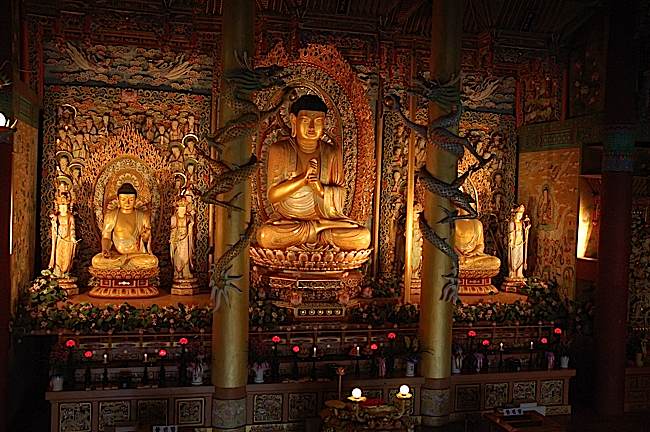
There is so much that is essentially meaningless in this world, or worse. There are so many things that can be a huge distraction, leading us away from peace, and into states, no one would want any part of for themselves or for others. If we’re not careful, there are so many ways we can waste this life.
When I remember something of my own actual suffering and the sufferings of those I’ve known in the past, and what I can witness at least some of today, it makes all these teachings meaningful and precious.
Making these connections is essential, so that a verse of refuge does not remain just words on a page.
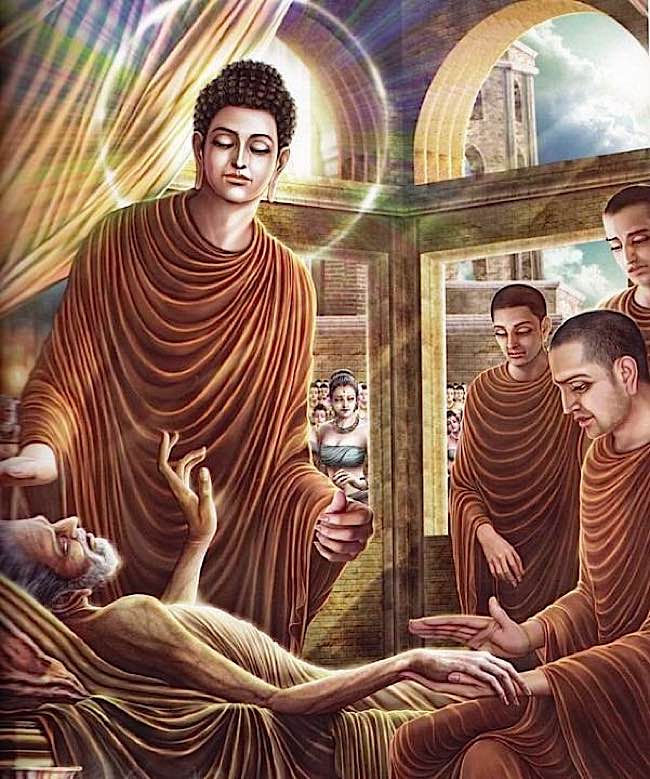
Take the remedy: Refuge
Another way of looking at the great good fortune of meeting a qualified spiritual teacher, teachings and refuge, is to think of a person who is sick, ‘with the chronic disease of the disturbing emotions’ as they say. This illness is inconceivably worse than having just one disease. It is the suffering brought by confusion, and it gives rise to illnesses and hardships not only in this life, but in various forms in lifetime after lifetime after lifetime. Take the remedy while you still can.
Buddha Dharma teachings can actually alleviate samsaric suffering — much more dramatic than remedying just one illness. And if going completely beyond one form of sickness in this life is something to truly celebrate, and feel real gratitude for, then how much more so finding a path that remedies and leads to freedom from all suffering?
Related Features:
- The Dalai Lama and eight other teachers explain how to avoid taking Refuge in the wrong things and why Refuge can help us overcome obstacles
- Padmasambhava: The Eight Great Qualities of Taking Refuge; Taking Refuge in the Three Precious Jewels, the Defining Practice of Buddhism, and How it Can Rescue Us From All Dangers.
- The Profound Practice of Taking Refuge
- The Maha Samaya Sutta: The Great Meeting Sutra: refuge from fear in Buddha, Dharma and Sangha
- Video: Part 2 of Buddhist Teachings on Ngondro, the Foundation Practices with Venerable Zasep Tulku Rinpoche: Teachings on the Truth of Suffering, the Importance of Taking Refuge, and a Guided Meditation Visualizing Shakyamuni Buddha
- Fearless Buddhist: overcoming fear and becoming Gesar, : How to overcome fear in uncertain times, according to Pali Sutta, Mahayana Sutra and Tantra
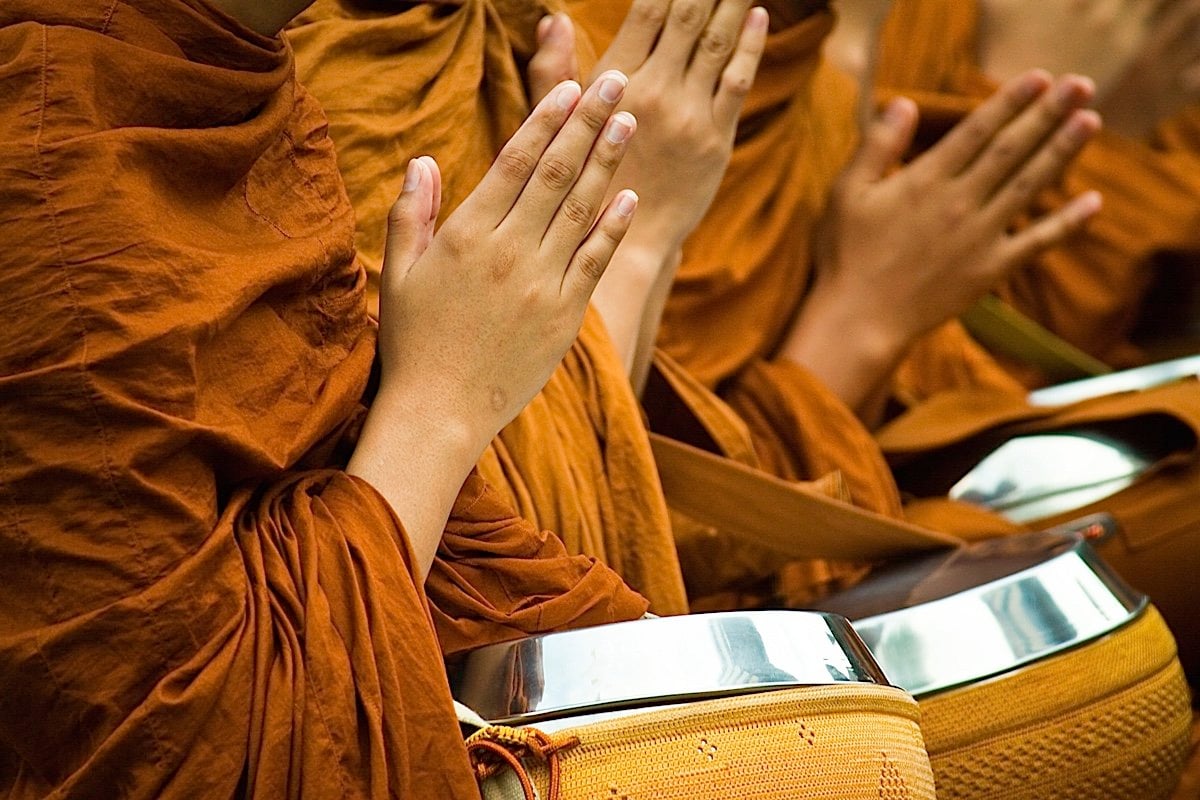
Ask yourself: am I grateful?
When I hear people talking about refuge, but they don’t have this astonished, celebratory, and deeply grateful quality, I am skeptical. I think it means they haven’t taken the measure, emotionally, of the significance of meeting this path. Although this appreciation can be powerful, and change our lives, so often we take our good fortune for granted, and really, there is no way to measure such a loss.
It’s said that one of the characteristics of a fortunate human life is that ‘a Buddha has appeared’. I can relate this historically, and individually too, as I’ve met the teachings.
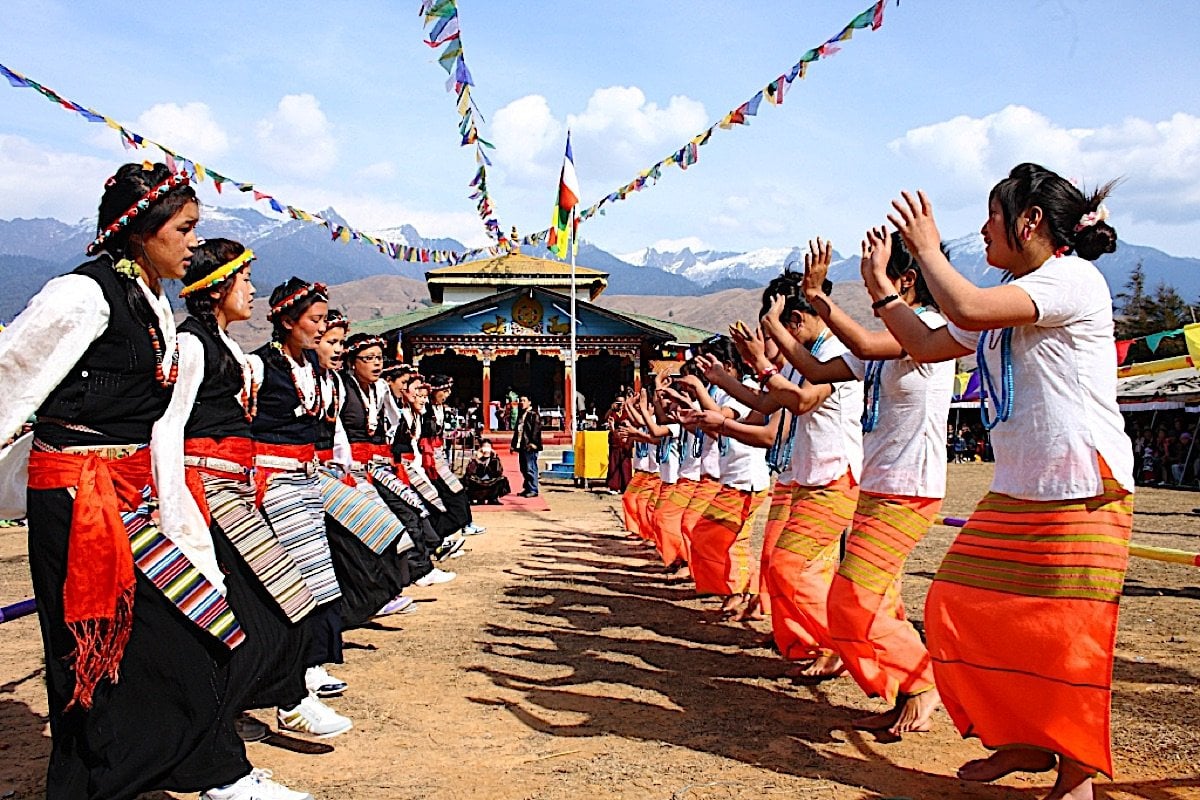
Sometimes when they talk about deeper states of meditation, an analogy will be given of a person walking through a hostile wilderness, or a blazing desert, and seeing a person who is refreshed, and clean, and welcoming walking towards them. We ask him with astonishment and delight where he’s come from and he tells us that just up ahead, there is fresh water. If we ask, he leads us there, to safety.
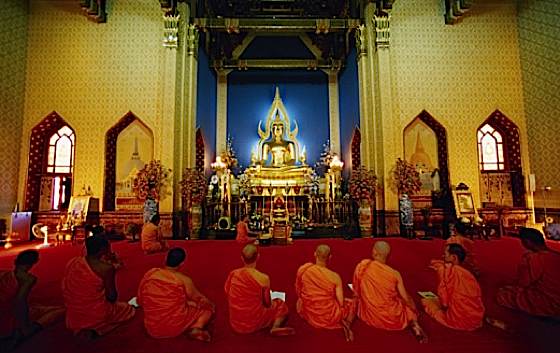
A wilderness of uncontrolled desires
In truth, this whole world, including myself, have been desperate and wandering through the wilderness of uncontrolled desire, aggression, and dense ignorance. We have suffered the consequences of the afflictions for countless lifetimes, or so it seems, and meeting the teachings, and a teacher who embodies these liberating teachings in this life is of incalculable meaning and good fortune. This goes beyond what words can even begin to say.
Lama Zopa says rightly that this life is more precious than skies of wish-fulfilling jewels.
We have the freedom now to take up a path that will lead us out of all suffering, to peace and health and safety, and enable us to help all our loved ones out of their suffering, and to happiness. How extraordinary this is! For as long as this opportunity lasts, how rare and very precious!
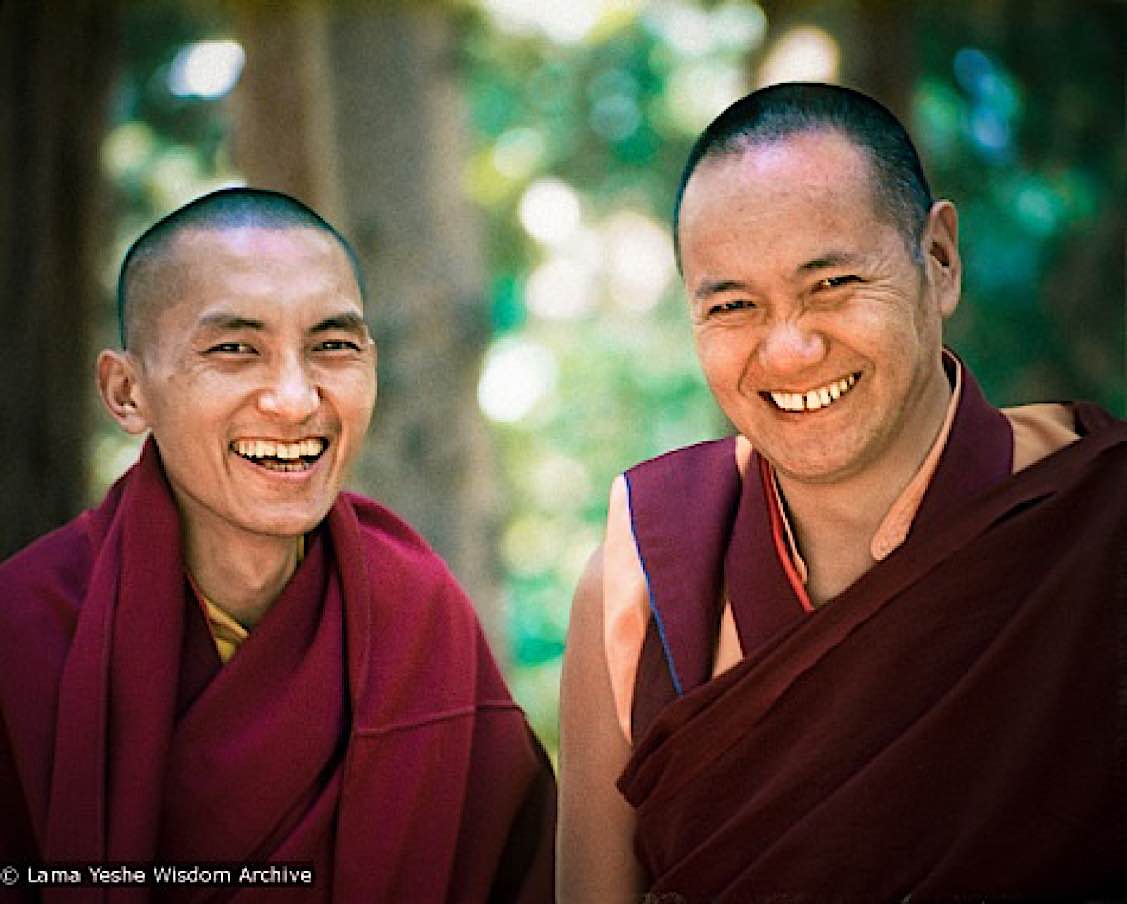
I can imagine a world without the Buddha, the Enlightened One appearing — because this was my life, and the life of many others living right now. They are without a guide, and as Shantideva said,
Although they do not want suffering,
every day they create its causes
and although they truly long for happiness,
like an enemy they ignorantly destroy it
Refuge in the Dharma
Not only has an enlightened person, the Buddha, found the way out of the miseries of samsara’s unending pains and dangers, he has also taught, and the teachings are available in languages we can understand. And not only that, we have noble teachers right to this day who have accomplished this path. How remarkable is that?

The unsurpassed, penetrating and perfect dharma
Is rarely met with even in a hundred thousand million kalpas.
Having it to see and listen to, to remember and accept,
I vow to taste the truth of the Tathagata’s words
– A Traditional Zen Chant, recited and reflected on before teachings
Dharma as medicine
The Dharma teachings are likened to medicine — remedies to delusion, suffering and its cause; they are like well-made maps for our perilous journey. We’re right to celebrate them, take refuge in them, to hold them in the highest regard, to write them in gold; with tears in our eyes, to place them on our head, and then to study and to learn them well, so we can find freedom from suffering — and lead others to that place of safety, comfort, and ease.
If we appreciate all these factors coming together now, a sense of our amazing good fortune wakes up in us.
Reciting sutra or Dharma teachings is a healing practice. In this video, Jason Espada recites the entire Medicine Buddha Sutra:
The Meaning of Taking Refuge
Although years have gone by and I’ve heard the verse and teachings on refuge as rather simple and introductory only, I now see it as something that can be a very very deep practice. This being metaphorical language, it’s helpful to think about what this is saying in prose also and to translate the terms in a way that they move us, and are inspiring and practical too. I would like to encourage each individual to do this.

Here are a few lines as an example that draw out the wonderful meaning of this practice, of connecting with The Three Jewels, and dedicating ourselves to realizing the teachings:
I entrust my spiritual life to the Buddha, the Enlightened One, the Great Compassionate Teacher
I dedicate myself to the study, practice, and realization of the Dharma,
{and in this way take refuge in all the Liberating Teachings}
and I entrust myself to the guidance and support of the Noble Sangha, the Accomplished Spiritual Community, the Great Assembly of Saints and Bodhisattvas…
One formalized way of expressing our refuge is to chant it. Here it is chanted musically in Tibetan by Yoko Dharma:
Taking Refuge in the Dharma Includes Ethics and Meditation
We take refuge in the Dharma in actual fact by practicing the precepts and meditation, cultivating calm and insight. If we just repeat words, that by itself is not taking refuge. Think about it. When our aspirations and words of commitment and our actions come into alignment – that is what brings protection. That is what brings the safety and peace that we all seek.
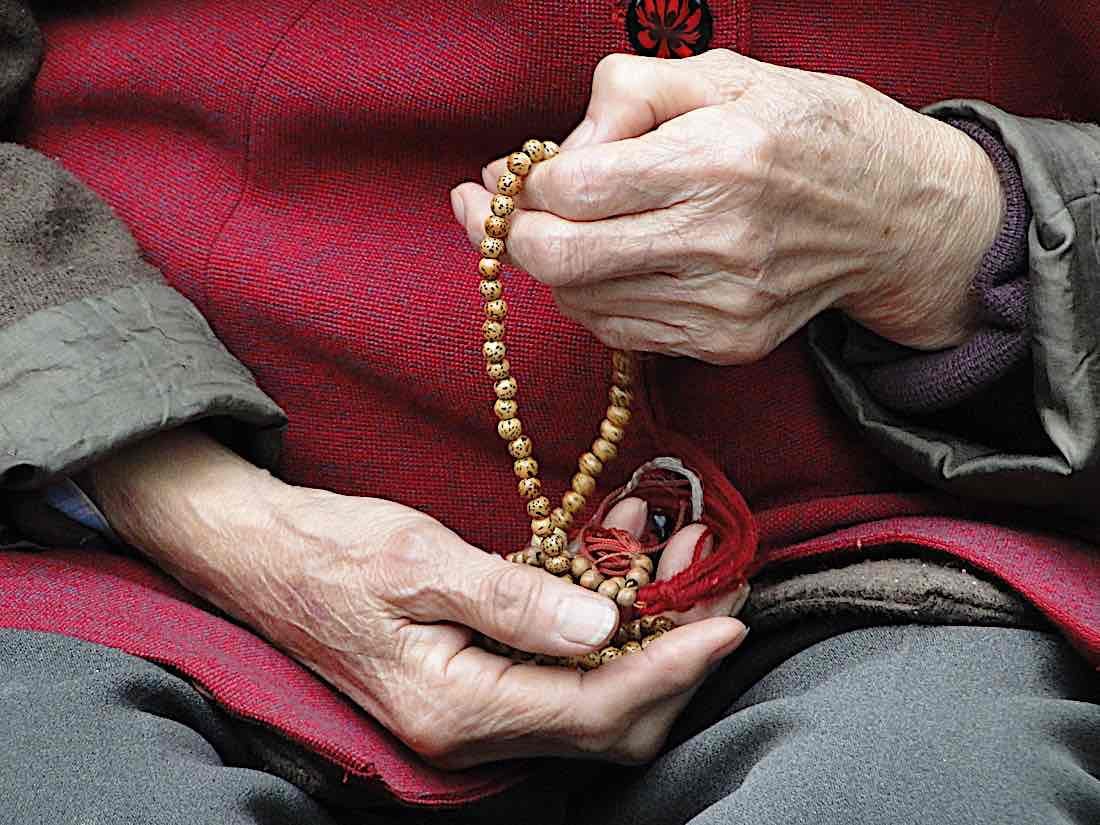
The Relationship Between the Inner and Outer Refuge
When we are lost and confused, we can’t guide even ourselves, let alone others. We need to follow those who know the way. This is the Buddha and our accomplished direct and lineage teachers. Our friends and family, and even our fellow well-meaning students, until they have begun to get the result of practice themselves can’t guide us. They may even add to our confusion. Without a doubt, we need those with wisdom to show us the way, and to guide us.
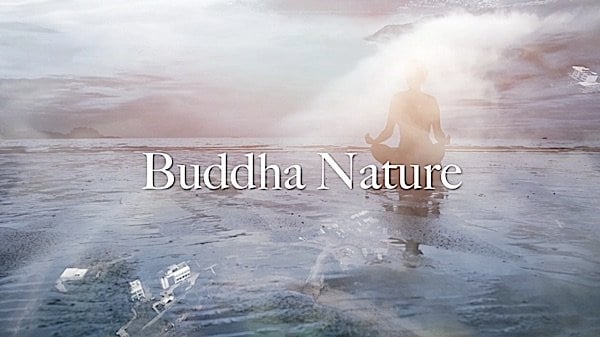
There are many teachings we can find on what they call Inner Refuge, or taking refuge in the Island Within or our in own Buddha Nature. [For a feature on Buddha Nature, see>>] These may be appealing and appropriate for some at some point, but for now, what I can most easily connect with and trust in is the Buddha as the teacher, the Dharma as the Path, and the Noble Sangha, outside, those I rely on and turn to for inspiration, guidance and support. We nourish and protect our ‘Baby refuge’, our relatively new and tender motivation to live a life of insight, freedom from suffering, and helpful, positive action. This is exactly the reason for the external refuges.
The Dharma teachings are then to be studied, and practiced, and when we begin to get some result for ourselves, we can look to that as a refuge. This is where the causal refuge – the outer conditions, becomes the resultant refuge. Our own practice has created the peace and well being, or the patience and gentleness, or insight that can protect us. This is what the Buddha meant when he said, Make an island of yourself. How wonderful.
We can in time even become a refuge, or a safe haven for others, who like ourselves have long suffered in samsara. We can offer them the teachings and encouragement and whatever else they may need, and help them also to become free.

Refuge is the Antidote to Fear
When things are uncertain, that is when we need the peaceful sanctuary that is offered by Spiritual Traditions, and by fine teachers who have both wisdom and integrity.
In one of the Paritta, or protective chants, called The Banner Sutta, the Buddha says that when in danger,
Bring me to mind, and all fear will be dispelled
Bring to mind the Dhamma…
and bring to mind the Sangha, and all fear will be dispelled…
The way this works is really something wonderful, and it involves faith. For Westerners, this needs to be drawn out a little, but it is vital, especially when it comes to our spiritual life.
There is a kind of faith that can arise for a person when first meeting a teacher, or a tradition, or listening to a teching and teacher online. They can immediately feel ‘Yes, that’s it. This is the truth.’ This has happened so many times, in both Buddhism and in other Traditions.
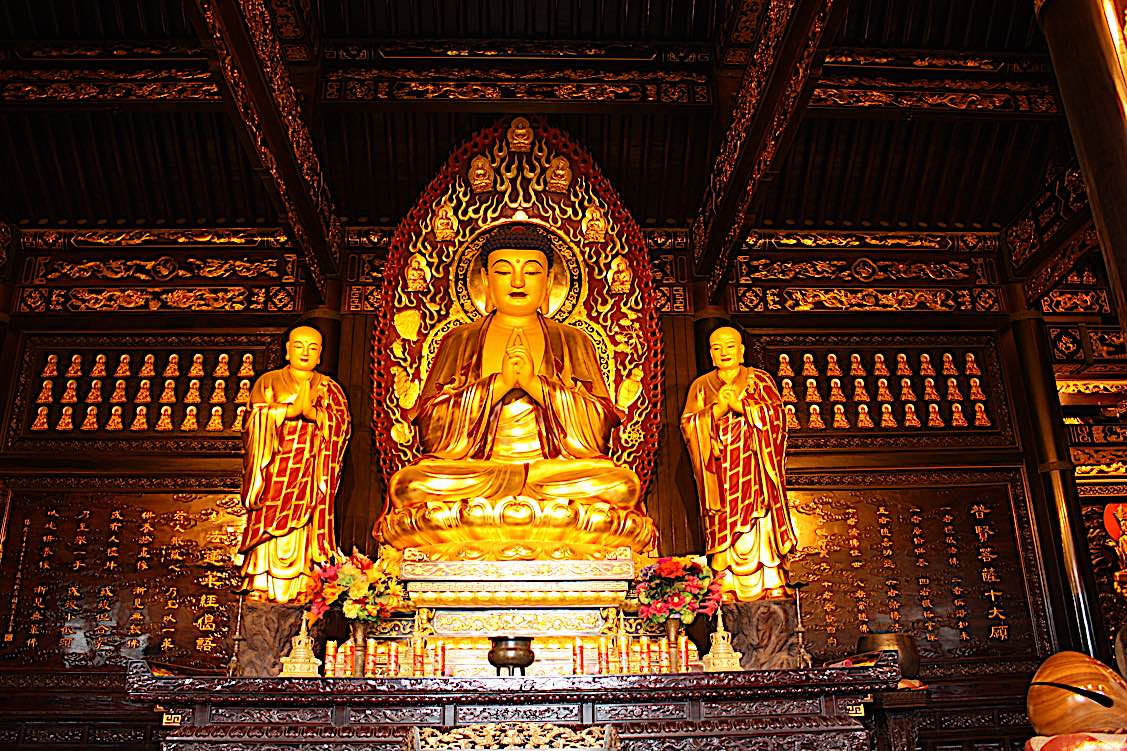
Awakening faith
Thich Nhat Hanh told a story of seeing the drawing of a Buddhist monk on a magazine when he was a young boy, and how it awakened faith in him, and a strong desire to learn more.
Some people when they talk about faith, almost right away want to qualify that ‘this is not blind faith’ — but to me, when I hear them say this, it feels like something may be lacking for them. The meaning of faith here is a kind of intuition, a knowledge of things not yet proven. That some have this experience while others do not only points out our differences in temperament.
Faith as an intuition of truth is something deep, and in the language of the teachings, onward leading. Those without it rely more on reason, and may eventually get to the same place, of deep trust in a teacher and the teachings. Which brings me to a second kind of faith, that I’ve heard called ‘verified faith’.
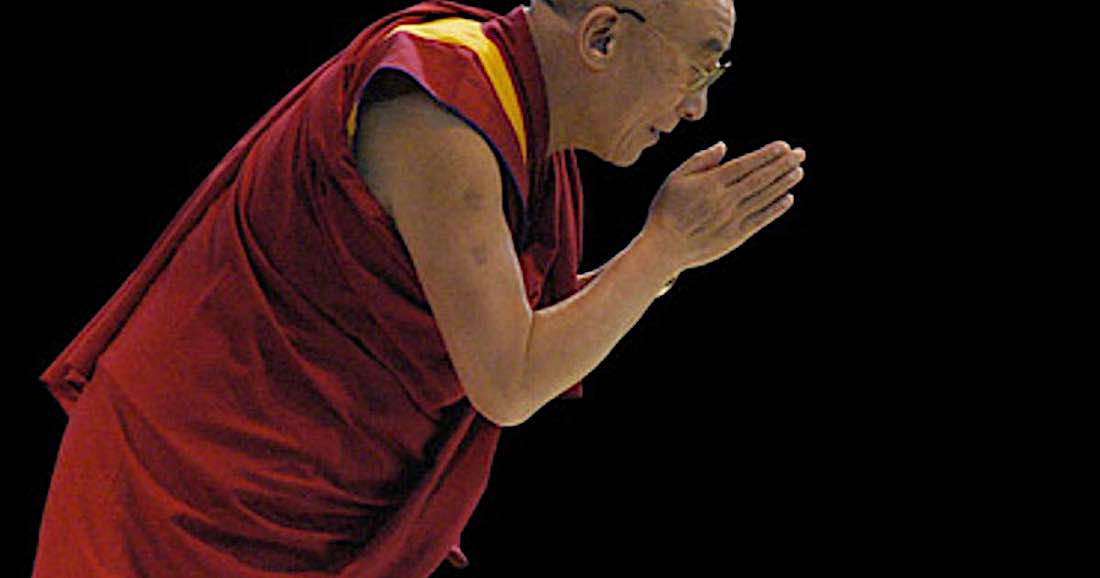
We meet a path and are inspired to learn more. When some result then comes from our own practice, no one can ever take this from us. That’s where faith becomes more solid, and reliable. There is more we can learn, and so the first kind of faith, as a deep intuition of truth, is something that can stay with us, and our learning to trust that more and more can continue to lead us onwards. This gets easier with time, and humility is essential here as well.

Taking Refuge, Affirming our Commitment, Cultivating the Strength of Our Vows
In Master Sying-An’s Exhortation to Resolve Upon Bodhi, he says there are great and small vows, partial and complete ways of dedicating ourselves, and that
If our resolves are true, we can realize our goals.
When our vows are vast in scope, then our practice will surely go deep…
Slowly reciting and reflecting on a verse, such as the one on refuge, if we are attentive, can show us the state of our mind. Do we feel joy when we think of connecting to these teachings? Do we see their great value, the potential they hold for us?
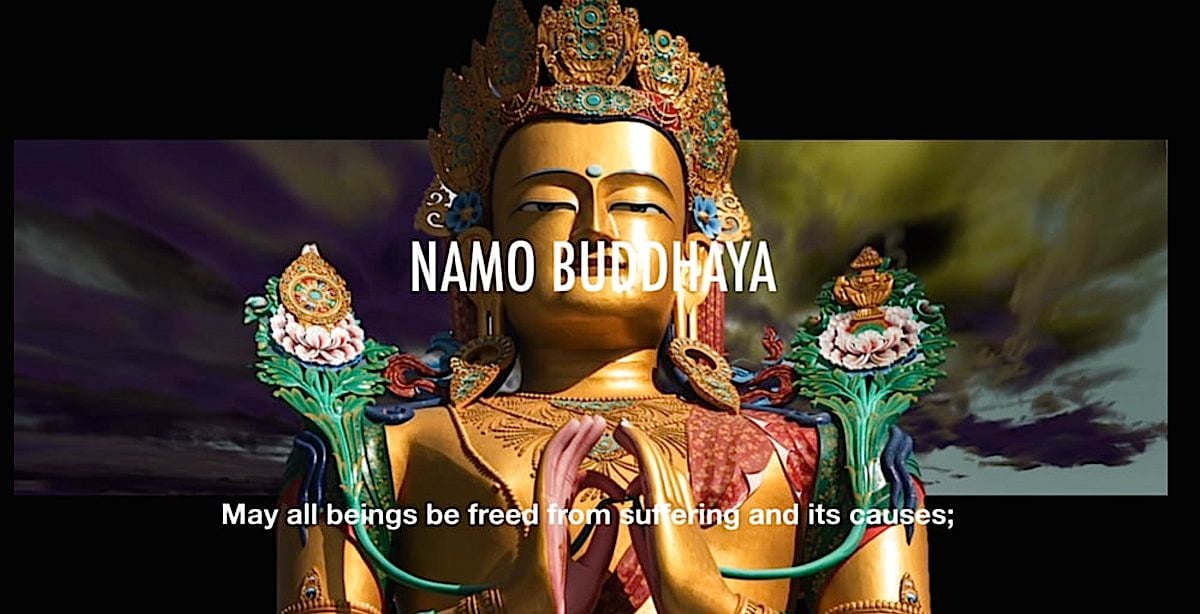
The Nature of a Mental Factor
In the teachings on the jhanas, or deep states of meditation, Bhante Gunaratana explained how a quality of mind, such as loving kindness, when cultivated for a time, can remain in our mind when we then go on to do other practices. It can be like a bell that has been struck just so that continues to ring for a time, or like a cloth that holds some color that’s been added. States of mind are impermanent, so they need to be refreshed and renewed.
This insight that Bhante G offered was really illuminating, and practical, since we are cultivating mental states all the time, and, if we are skillful and attentive, we can see what is present or absent in our mind at any time, and we can learn to generate, sustain and increase those qualities we want to have present. It’s empowering to know this.
If you work hard at training your mind, resolutions can have great power…
– Yuttadhammo Bhikkhu

Taking vows and recommitting ourselves
Taking vows and regularly recommitting ourselves to them is so useful. They can show us very clearly what supports and what goes against our aims. When our vows are clarified and made stronger, day by day, year by year, they have more and more of an effect in our lives. Everything organizes itself around that naturally, and beautifully. Then when we read again and reflect on and recite our refuge vows, we further awaken this sense of gratitude and deep commitment. This is the profound practice of taking refuge.
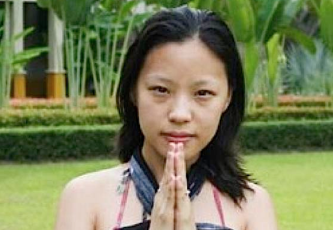
Because of this unique and precious opportunity we have today to benefit ourselves and others through connecting deeply with this path, and by practicing the teachings, I’ve written these few words as encouragement for myself and others. May they be of lasting benefit.
May the deep meaning of refuge be unfolded by each of us,
and may we all be supported and upheld by the Buddhas and Bodhisattvas
until we reach enlightenment.

1 thought on “The Profound Practice of Taking Refuge: the foundation of Buddhist liberation, faith, devotion, protection by Jason Espada”
Leave a Comment
More articles by this author
Search
Latest Features
Please support the "Spread the Dharma" mission as one of our heroic Dharma Supporting Members, or with a one-time donation.
Please Help Support the “Spread the Dharma” Mission!

Be a part of the noble mission as a supporting member or a patron, or a volunteer contributor of content.
The power of Dharma to help sentient beings, in part, lies in ensuring access to Buddha’s precious Dharma — the mission of Buddha Weekly. We can’t do it without you!
A non-profit association since 2007, Buddha Weekly published many feature articles, videos, and, podcasts. Please consider supporting the mission to preserve and “Spread the Dharma." Your support as either a patron or a supporting member helps defray the high costs of producing quality Dharma content. Thank you! Learn more here, or become one of our super karma heroes on Patreon.
Jason Espada
Author | Buddha Weekly
Jason Espada is a writer and classical musician living in San Francisco; a steward of his father’s photography, and the founder of A Buddhist Library: http://www.abuddhistlibrary.com. Over the years, he’s made a number of recordings of Buddhist teachings. These days his focus is on the natural connection between spirituality and social action. His new website is at JasonEspada.com.



















The concept of refuge speaks to something very deep in the human heart, the deepest and truest reality within us. When we take refuge in the Buddha, we are ultimately taking refuge in our own enlightened nature, the truth of who we are. Yongey Mingyur Rinpoche explains it very well…
https://www.lionsroar.com/why-we-take-refuge/